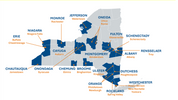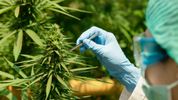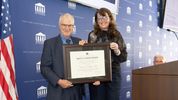Medical Providers, as "essential services," remain open for business during the COVID-19 New York PAUSE. County Health Department websites offer a lot of guidance to medical providers. NYSDOH holds weekly webinars with Q&A on COVID-19 Updates for Providers. But the main source of guidance for how medical providers should be conducting their office hours remains the information from the CDC.
Current Guidance is as follows:
1. Call every patient in advance and discuss whether or not the appointment is absolutely necessary, or can be postponed. Cancel all elective services. If a patient needs to be seen in the office, every patient should be given their own time slot. Do not double-book during the COVID-19 crisis.
2. If the patient needs to speak with the physician, or a nurse, but does not need to physically come in, arrange a telehealth call.
3. Tell every patient that they are not permitted in the office if they are sick, have been in contact with anyone who is sick, have traveled.
4. At the office, regular ingress and egress should be separated as much as possible. Consider alternate foot traffic patterns through your office space.
5. Unless you are an urgent care center, and will be accepting sick patients through the door, place a STOP notice on the front door, stating anyone who is sick will not be allowed in the building.
6. Prohibit guests, unless one is absolutely required to assist the patient during the visit.
7. Every person seeking to enter should be directed to an intake location first, where their temperature is taken, and they are asked questions about any symptoms they have, anyone they have been in contact with have, and their travel.
8. Limit the contact that patients and your staff have with each other throughout their time in your office. Separate people, maintaining a 6 foot separation throughout the office.
9 . In the waiting room, remove most of the chairs. Limit seating to chairs separated at least 6 feet apart.
10. Remove any sign-in sheets at the front desk. Have your front desk take the patient's name verbally and sign them in. Do not take copayment at sign in. Arrange to bill patients instead.
11. Call patients back to their exam room only when no other patients or staff are in the hallway.
12. Before the shortage of masks was confirmed, all patients were to be given masks and gloves. At this point, given the shortages, make sure your staff are all gloved and masked if they will be within 6 feet of a patient.
13. Train and re-train all staff on prevention and sterile techniques.
14. Complete total environmental cleaning in each exam room between every patient.
15. Sign-out and scheduling of any patient follow-up appointment should be touchless, the same as sign-in, described above.
16. Complete total environmental cleaning of the office throughout the day, disinfecting all surfaces frequently.
17. Take special precautions with any staff that are in any high risk categories.
Specific guidance for air flow, and seeing symptomatic patients is also available. Guidance unique to skilled nursing facilities, home health care, hospice, child and family treatment, pregnancy, dental, shelters, and more, is also available to providers of health services, on the same site.
"Homemade masks are not considered PPE, since their capability to protect HCP is unknown." - Centers for Disease Control and Prevention Strategies for Optimizing the Supply of Facemasks
https://www.cdc.gov/coronavirus/2019-ncov/infection-control/control-recommendations.html
 unknownx500
unknownx500










